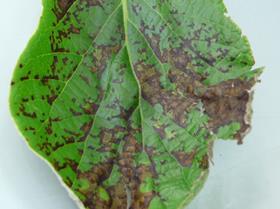
In New Zealand, the country's kiwifruit industry has scrapped proposed plans to cut out some 200ha of vines in a bid to contain the spread of the bacterial disease Pseudomonas syringae pv actinidiae (Psa), opting to focus its efforts on gold kiwifruit.
According to a report by stuff.co.nz, John Burke of Kiwifruit Vine Health (KVH) – the industry-government forum created to manage and control Psa – said the decision had been made based on the fact that the industry had not been able to contain the most virulent, ‘Italian isolate’ strain of the disease within the Te Puke, Bay of Plenty zone.
Mr Burke noted that three cases of the Italian strain had recently been confirmed to the west of the high-priority Te Puke zone, with these new cases forcing the change in strategy to a focus on gold fruit vines showing advanced, secondary symptoms.
Some 14 gold orchards within the high-priority zone have displayed these secondary symptoms, which include cankers, red sap and dieback, with green vines only displaying leaf spotting.
Mr Burke said that 45ha of vines affected by the Italian strain of Psa had so far been removed, equating to less than 0.5 per cent of the industry.
However, KVH has explained that the change of tact is not linked to a request by Te Puke growers Rob Bayly and Russell Baker to agriculture minister David Carter's office for the government to stop the vine-cutting programme, saying the events are unrelated.
'Orchards are needlessly being destroyed putting some affected growers under enormous financial and mental stress,' the growers said. 'There is an urgent need for the minister to undertake a peer review of the actions of KVH with independent scientific advice and overview.'
The growers acknowledged that the vine cutting was voluntary, but claimed that crucial information on the risk to vine health was withheld from growers, while also pointing to a lack of scientific, independent monitoring on the spread of Psa.
New Zealand Kiwifruit Growers president Peter Ombler said that he had recently met with the growers, and explained that the initial strategy was made based on the information available to the industry at the time – something that had since changed.



